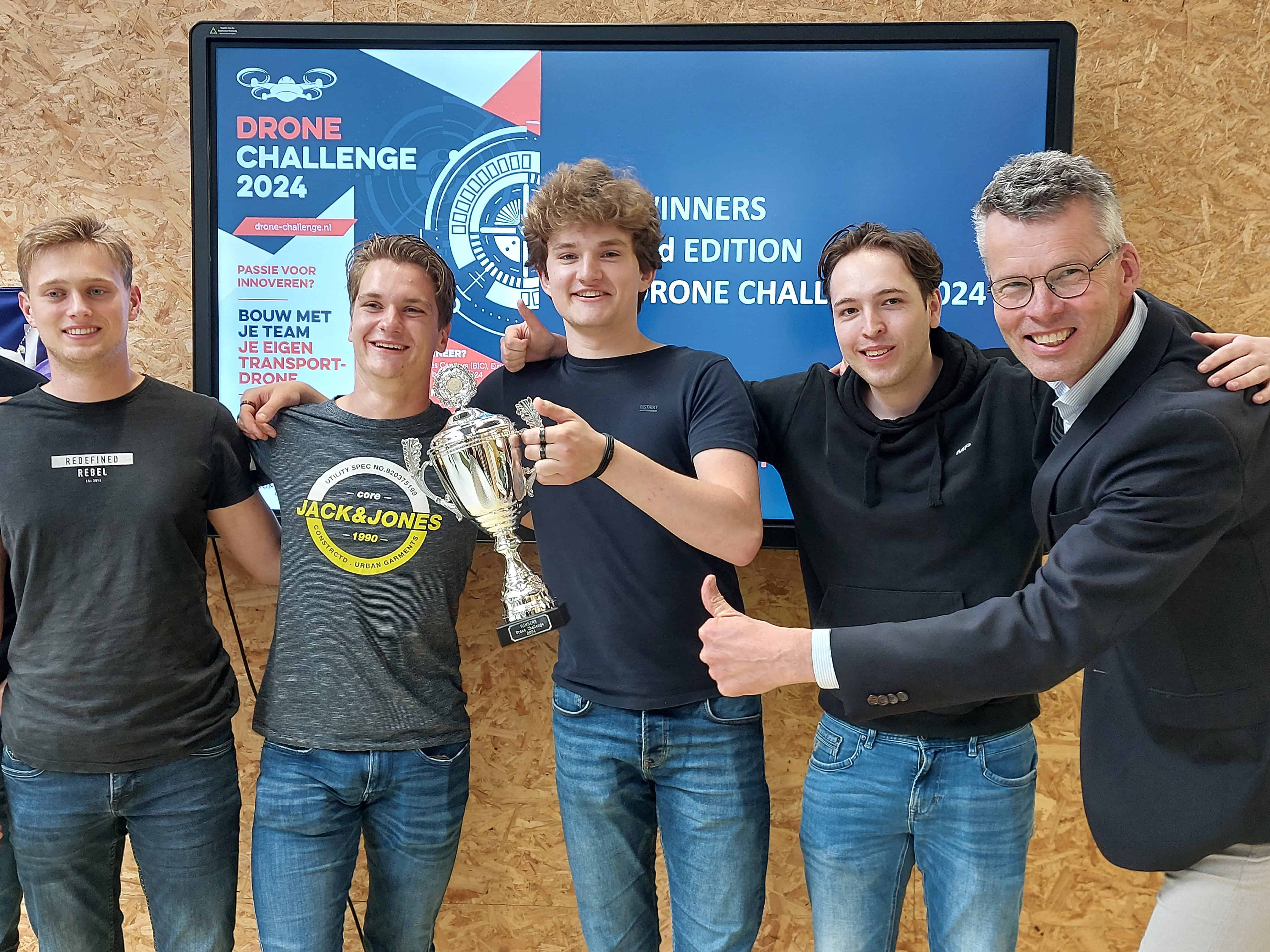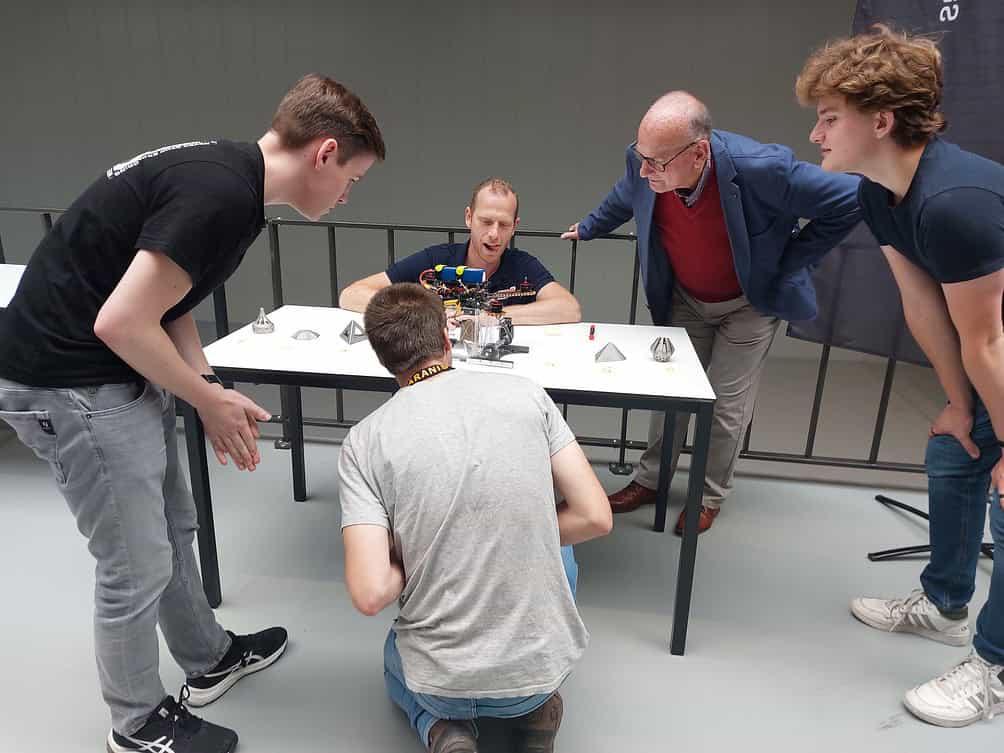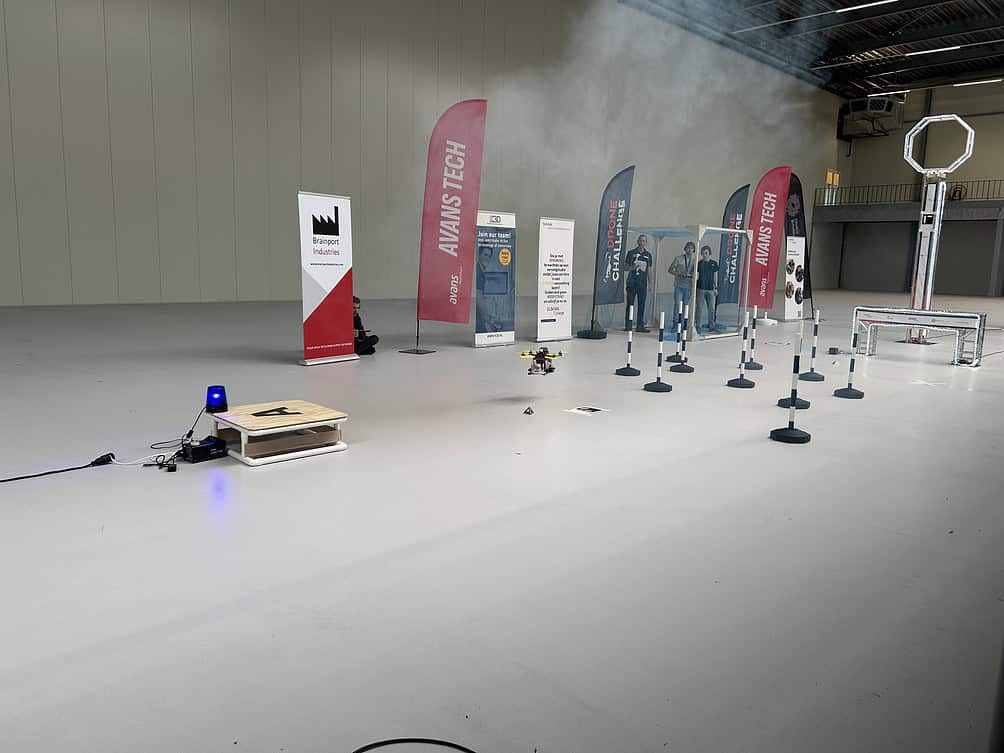
Six ingenious drones stand out in front of the Avans Hogeschool location on Brainport Industries Campus (BIC). That can only mean one thing: the finals of the Drone Challenge. Students from Avans, Fontys Hogescholen, and Summa College worked on their transport drone for five months. The six teams will present their drone during the finals and perform tests. The device must not only be able to fly, but it must also be equipped with a gripper to carry different objects. The expert jury will choose one winner based on the technical specifications and the tests performed.
The third edition was won by team 6 from Avans Hogeschool, consisting of students Roel Janssen, Tom van de Pas, Seger Sars, and Niels Stunnebrink. The expert jury’s verdict about the winning team: “This team scored high on all parts of the challenge. They were not always the best, but they showed an even, high performance. This was the final deciding factor.”
Why this is important?
More and more schools are using practical assignments to teach students certain technical and social skills. The Drone Challenge is another example of this. In addition to various educational institutions, several BIC tenants are also involved.
Creativity and atmosphere
What do the winners get? A big trophy, a lot of experience, college points, and … the honor. The students motivate each other to get the best out of themselves and the others,” observes Robert Wit, organizer of the Drone Challenge. This can also be felt during the finals. The students cheer each other on, enthuse each other, and tease a bit, for example, by making the objects that the drones have to pick up extra smooth. That is exactly the intention of the challenge, says Fontys lecturer Marjolein Daanen, who supervises the project teams. “The team competition adds extra creativity and a fun atmosphere,” she says. An important aspect of the competition is the combination of students from different schools. ” By doing so, we want to bring together the knowledge and practical experience of HBO and MBO students. The students come up with a plan and also execute it; the combination is important,” adds Wit.
Materials and grippers
To outsiders, all drones look alike, but to experts, significant differences can be seen. For example, a different material in the frame greatly affects the drone’s weight. In turn, a heavier drone needs a heavier motor to fly.
The grippers attached to the drones vary significantly in shape. Some teams opted for a gripper like the one in a grappling machine at the fair, while others chose a gripper like an excavator’s shovel. Two teams developed silicone grippers that can move through the air and grip a product. Some teams also chose a cage structure where the object can be slid in via the bottom or side. One team had the most spectacular gripper. They developed a mini welder that allowed them to grip the objects, including sparks.

Companies at BIC
In addition to collaborating with other students, participants also learn to work with companies. To this extent, BIC is an ideal location; several companies in the community helped the students develop and produce the drone. For example, K3D, specializing in 3D printing metal, printed the objects the drones were meant to pick up. “That collaboration with different companies makes the Drone Challenge truly unique,” Daanen states. For her, not only the technical but also the social aspect of the competition is important. “The students also learn a lot about communicating and developing presentation skills. I think those are very important aspects,” Daanen states.

Learning takes center stage
For many teams, it was a road of trial and error. Parts that didn’t fit right, a crash big time, or a wrong software setting—it’s all part of the game. “If everything goes right, you don’t learn anything,” Daanen states. So, the students admit to having had very few hours of sleep the nights before the finals.
And the results were worth it. The audience of the final – consisting of fellow students, teachers, employees of companies at BIC, and several other interested parties – is escorted to a hall. There, an intricate course is laid out for the students to fly through with the drones. The test starts with picking up the object and bringing it to a final destination. Then, the drone must fly through a “forest” (a field of poles) and then through a higher hoop via a bridge. Finally, the pilot must land the drone on a pillar at the end of the route. Several teams completed the test, but some were not so lucky. For example, one team’s drone broke down the night before the final tests. They were unable to fly at all. “That, too, is part of the competition. In any case, one thing is certain: the students learned a lot and also had a lot of fun in the process of developing the drones,” a teacher concludes.


